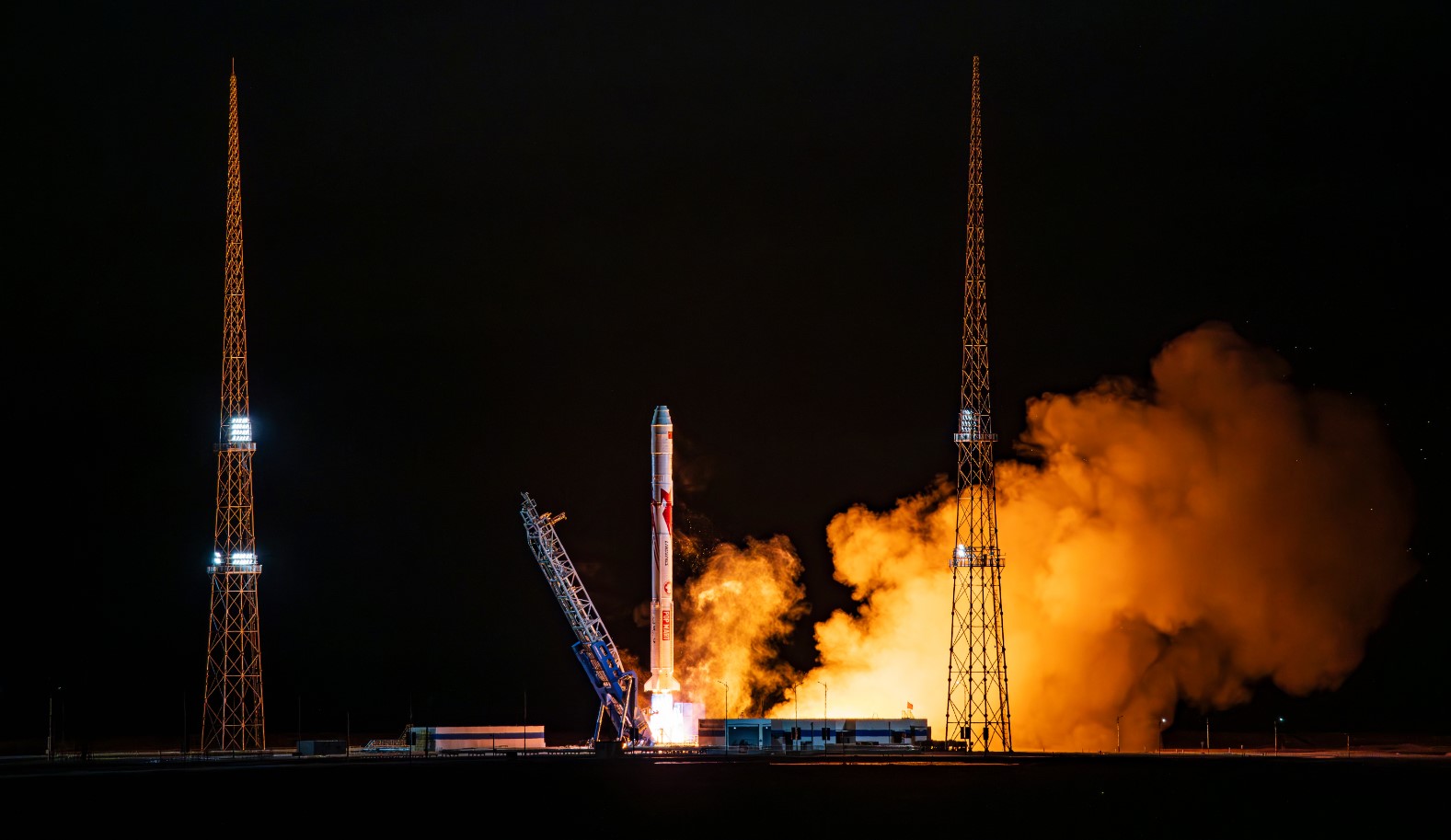Products You May Like
HELSINKI — Chinese launch startup Landspace successfully sent satellites into orbit for the first time Friday and revealed details of a new stainless steel rocket.
The third Zhuque-2 methane-liquid oxygen rocket lifted off at 6:39 p.m. Eastern (2339 UTC) Dec. 8 from the firm’s launch pad at Jiuquan Satellite Launch Center in the Gobi Desert. Landspace confirmed launch success an hour after liftoff.
Aboard were the Honghu, Honghu-2 and Tianyi-33 satellites. The latter was developed by Spacety, a Chinese commercial satellite company sanctioned earlier this year by the U.S. Treasury Department. Four objects associated with the launch have been cataloged by U.S. Space Force space domain awareness in 433 by 461-kilometer orbits inclined by 97.3 degrees.
Zhuque-2 (“Vermillion Bird-2”) is 49.5 meters long, with a diameter of 3.35m and a mass at take-off of 220 tons. The first stage is powered by four Tianque 80-ton-thrust methane-liquid oxygen engines.
It can carry 1,500 kilograms to a 500-kilometer sun-synchronous orbit (SSO). An upgraded version will be capable of lifting 4,000 kg. The next Zhuque-2 will use an improved second stage engine.
The launch marks the first time Landspace sent satellites into orbit. The rocket’s first flight, which took place in December 2022, ended in failure and the loss of an unconfirmed number of satellites. The second, in July this year, was successful. It carried no active payload.
Landspace is now looking to ramp up production and launch cadence. It plans to launch three Zhuque-2 rockets in 2024, six in 2025, and 12 in 2026, according to Zhejiang Daily, citing the firm’s vice president. The company also has new, larger plans in the works.
Stainless steel Zhuque-3
Landspace used the successful launch to reveal more defined plans for the stainless steel Zhuque-3. The plan for the rocket was first announced last month.
The two-stage Zhuque-3 will be 4.5 meters in diameter and have a total length of 76.6 meters. Its mass at liftoff will be about 660 tons and be powered by nine Tianque-12B engines. Payload capacity to LEO will be 21,000 kilograms when expendable. It will carry up to 18,300 kg when the first stage is recovered downrange, or 12,500 kg when returning to the launch site.
The company plans a 100-meter-level hop test at the end of the year, China Youth Network reported. It is targeting a final assembly and first flight of the Zhuque-3 in 2025. Each Zhuque-3 may be reused up to 20 times.
Landspace CEO Zhang Changwu told Chinese media that the firm is working on a 200-ton full-flow staged-combustion-cycle engine, to be ready in 2028. That engine would power a two-stage reusable launch vehicle with a diameter of 10 meters.
A paper authored by a Landspace rocket engine designer earlier this year revealed that Landspace is working on a 200-ton-thrust full-flow staged-combustion-cycle methane rocket engine. China’s state-owned main space contractor, CASC, is also developing a similar, Raptor-like engine to power its super heavy-lift launcher plans.
The paper’s author, Zhang Xiaoping, notably left a role under CASC in 2018 to join Landspace, sparking debate over the remuneration and retention of talent in China’s state-owned space sector as commercial plans in China began to take off.
Chinese commercial breakthrough
Landspace is one of China’s first commercial launch companies. It was established in 2015 after the Chinese government first opened up sections of the space sector to private capital in late 2014. The development is seen to be a reaction to commercial developments in the U.S.
The year 2023 has been a breakthrough year for commercial launch actors. Galactic Energy, iSpace, Landspace, Space Pioneer and state-owned spinoffs CAS Space and Expace have all reached orbit this year, accounting for 16 of China’s 58 orbital launches.
This number includes the first successful commercial liquid propellant launches, first with Space Pioneer’s kerosene-liquid oxygen Tianlong-2 and then the methalox Zhuque-2.
Another new entrant, Orienspace, is gearing up for its first launch in mid-December. Gravity-1 is a huge, 6.5 tons to LEO solid rocket that will launch from a sea platform.
